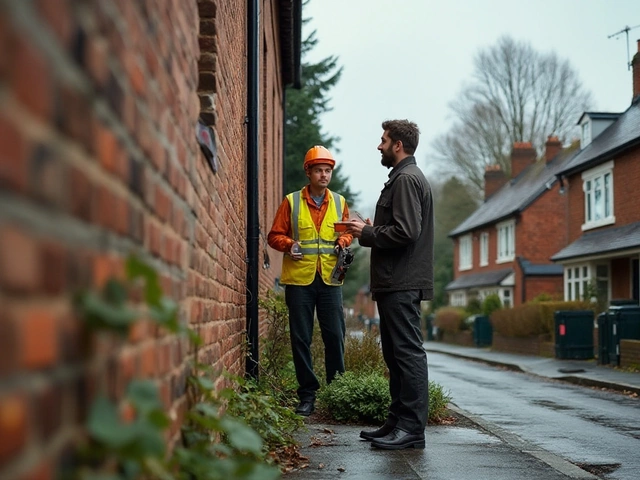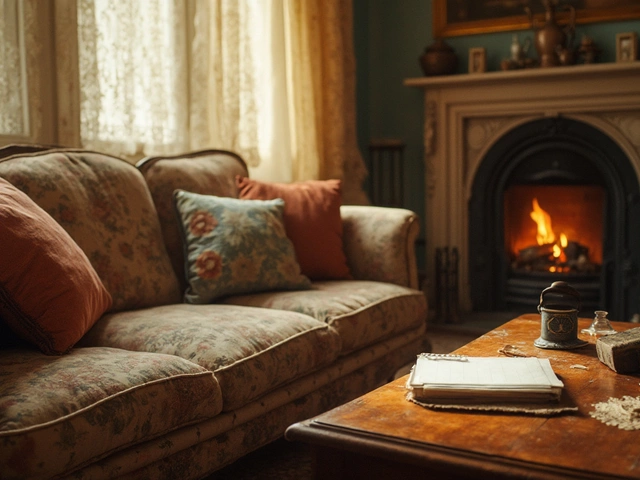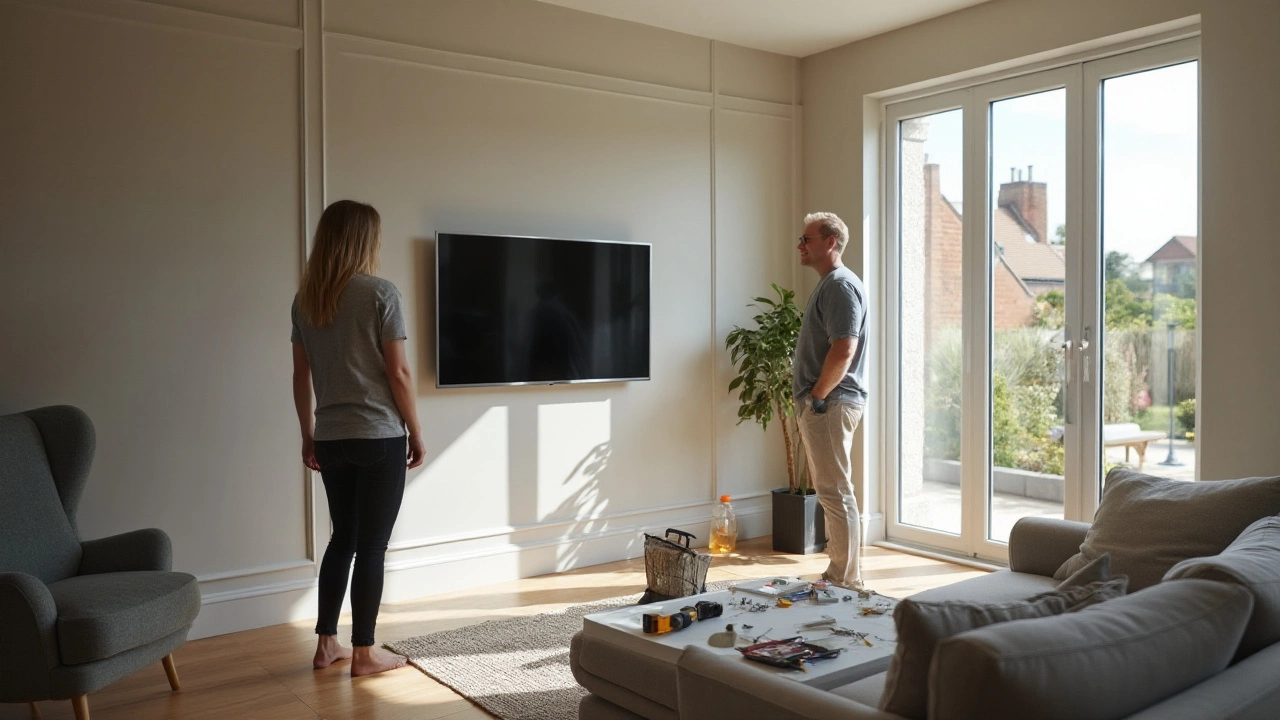
In the world of new builds, mounting your TV on the wall can seem like a daunting task, but it's a challenge well within reach with some knowledge and preparation. As home designs evolve, so do the materials and methods used in construction, bringing new variables into the equation.
Understanding these factors can make all the difference in achieving a sleek and secure result. From deciphering wall types to scouting for the right tools, here's your go-to guide for making your living space modern and efficient. Let's dig into the essentials you need to know when hanging your TV on the wall of a new home.
- Evaluating Wall Types in New Builds
- Essential Tools and Materials
- Mounting Techniques for Safety and Style
- Avoiding Common Mistakes
Evaluating Wall Types in New Builds
When moving into a newly built home, the first hurdle often faced by those eager to mount their TV is understanding the nature of their walls. The diversity in construction materials can either be an ally or an obstacle, depending on what you're working with. Most new builds today feature drywall interiors. Drywall, made from gypsum, is known for its smooth finish and ease of repair, but it's not as sturdy as other materials. This can make mounting a TV a bit tricky if proper support isn't ensured. Sturdy and vibrant, drywall needs specific accessories to avoid any mishaps, like the anchors that distribute weight more evenly across the surface.
It's vital to recognize that beneath that layer of drywall lays the real secret to a secure TV installation: the studs. Studs are the backbone of your walls and are usually placed at intervals of 16 to 24 inches apart. An electronic stud finder can be a godsend here, aiding in locating these supporting elements swiftly and effectively. Being aware of the studs' location is crucial since screwing directly into them offers the most secure hold for your television setup.
In addition to drywall, some new builds incorporate materials like concrete or brick in their designs, especially for feature walls. These add value and character but require different techniques entirely. For example, drilling anchors into brick or concrete necessitates specialized masonry bits and anchors designed for hard surfaces. It's equally important to note that these walls offer a rock-solid base—perfect for heavier TV units without the anxiety of drywall limitations. Yet the installation process tends to be more labor-intensive, requiring extra patience and precision.
Interestingly, a study by the National Association of Home Builders reveals that the design preferences in new builds are continually shifting, with mixed-material walls gaining popularity each year. As these designs evolve, so does the technology to accommodate them. An expert from the Homeowners Association was quoted saying, "Knowing the precise make-up of your home’s walls can save you not just time, but also protect your investment from potentially costly mistakes."
Alongside these structural considerations, aesthetic elements shouldn't be sidelined either. Materials like wood paneling or faux surfaces can greatly impact how you approach wall-mounting. They not only alter the visual appeal but might also mask structural nuances underneath. Every material type comes with its own set of tools and best practices. Mounting techniques can differ substantially in response to these unique attributes, requiring a tailored approach to each wall type. By understanding these elements, homeowners can ensure their prized TV is both an artistic and functional centerpiece in the living room.
For those planning to mount a TV in a space with mixed wall types, it can be helpful to map out wall compositions during the final walkthrough with builders. This provides insight into hidden elements like wiring and plumbing, which can affect the installation area's viability. Risking drilling into one of these could not only ruin the wall but also lead to costly repairs. A proactive approach, armed with knowledge, ensures that you can enjoy your entertainment setup safely and stylishly.
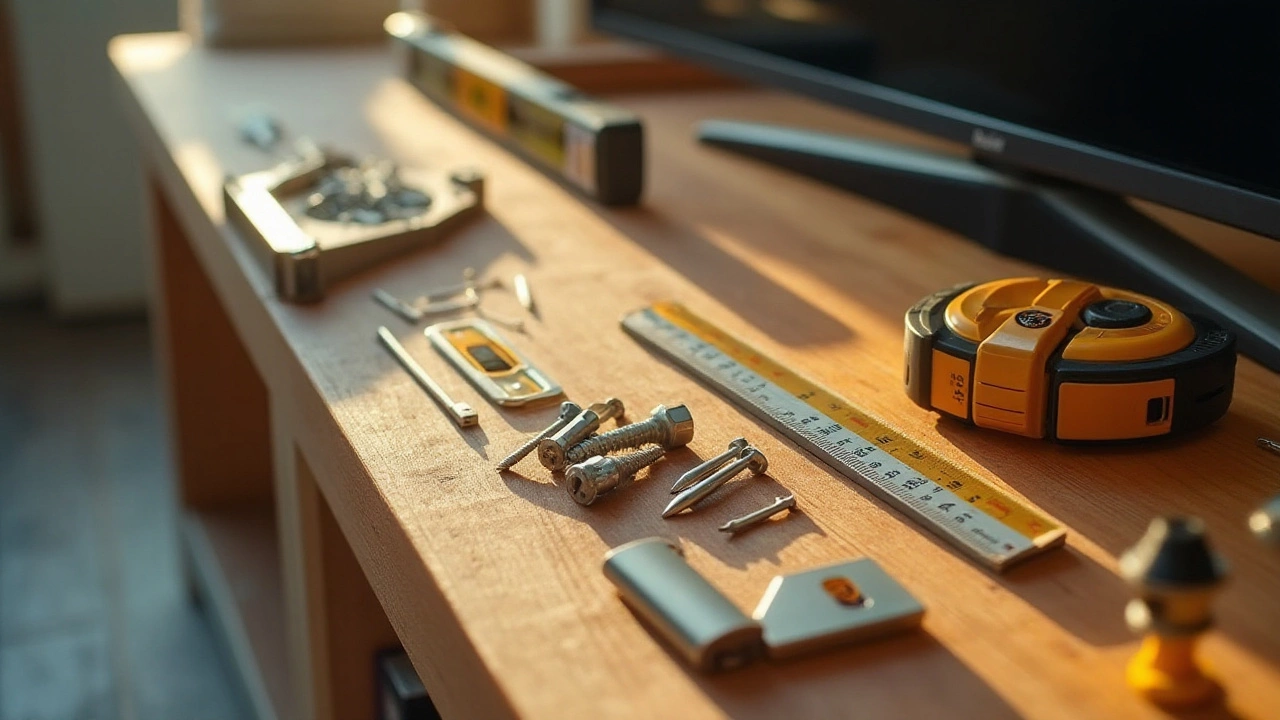
Essential Tools and Materials
Mounting your TV wall mount requires a handful of tools and an understanding of materials that are pivotal in ensuring a secure and aesthetically pleasing installation. In any new build, the materials used can vary greatly, impacting your choice of tools. At the heart of any successful installation is a sturdy TV wall mount, aligned perfectly with the studs behind the wall. Without this, the risk of your new screen meeting an untimely demise increases significantly.
A reliable stud finder is essential to locate the wooden structures behind your drywall. Studs provide the necessary support to hold your TV's weight without strain. When scouting the perfect spot, run your stud finder vertically to confirm the continuous presence of wood, reducing any chances of error. A power drill, too, ranks high on the list of critical tools, allowing you to bore holes into the studs capably and without much effort.
Leveling is a meticulous step that ensures your TV doesn't taint your sitting room with a skewed angle. Employing a simple spirit level can do wonders here. Hold it against your mount frame, adjusting until the bubble sits serenely between the lines. Torx screws are often the go-to in new builds, matching the materials used, yet a universal set of screws might still hold value.
"Measure twice, screw once! Adopting this approach minimizes the mistakes homeowners make during DIY projects, saving both time and expense," says John Roberts, a seasoned home installation expert.
It doesn't end with just the tools in hand; the cables have to be organized using cable concealers. This maintains the aesthetic appeal of your home, turning your television into a floating piece of art. For those conscious about preserving the wall, a mount with an articulating arm can position the screen without major alterations.
When navigating your new home's unique structure, it’s also critical to be aware of the weight rating associated with mounting brackets. Ensure it complements the size of your TV and resistance strength of your wall. Pair your drill bits to fit snugly into the anchor holes of the wall mount. While it might be tempting to freehand this step, precision reigns supreme.
A simple checklist before diving in can save headaches: Stud finder, power drill with a range of drill bits, Torx or compatible screws, level, mounting bracket, cable management tools, and protective eyewear. Each of these items plays a support role in your mission to create a modern, uncluttered space. Rely on these essentials as your trusted companions in turning your living area into a seamless, efficient space.
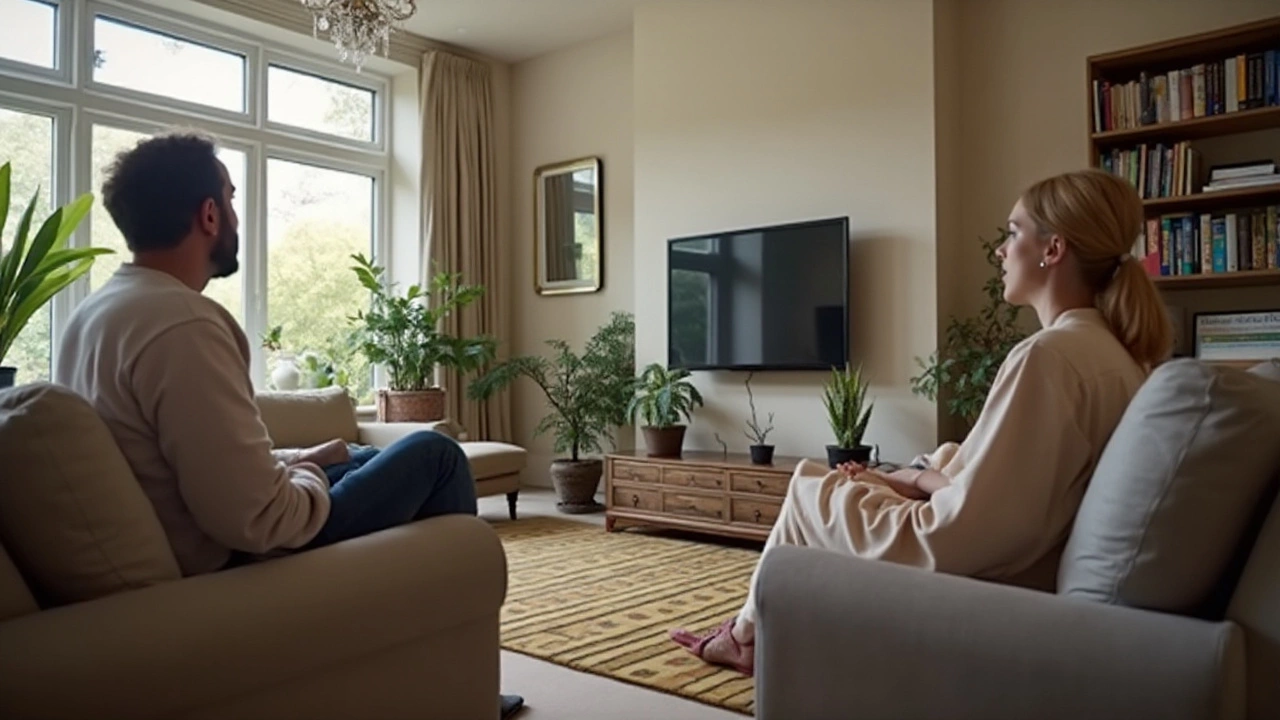
Mounting Techniques for Safety and Style
Finding the perfect balance between safety and style when mounting your TV on the wall requires a blend of practical knowledge and aesthetic acumen. Begin by selecting a spot that not only complements the room’s flow but also considers viewing comfort. Ideally, the center of your TV screen should be at eye level from your primary seating area, ensuring an ergonomically comfortable viewing experience. Once you've conceptualized the position, it's crucial to examine the integrity and material of the wall. Checking for studs is fundamental since they form the strong backbone for securing the mount bolts safely, providing reassurance that your TV will be held securely to the wall. Investing in a high-quality level is also essential to prevent any unpleasant tilting.
The choice of a wall mount is another critical factor. Fixed mounts offer stability and a sleek look with TVs sitting close to the wall, reminiscent of a piece of art. On the other hand, tilting and full-motion mounts provide flexibility, a boon for rooms with unusual designs or if you frequently rearrange furniture for events and home gatherings. Installation instructions often come with the mount package, but don't hesitate to consult an expert for a more tailored setup, especially for larger or more expensive TVs. Additionally, managing cables efficiently is part of the mounting technique that adds to both safety and style. Hidden cables create a clean, organized, and visually appealing entertainment center.
Hiding cables can be achieved using in-wall cable management systems or surface cable covers that match your wall’s color, minimizing visual clutter. For those technologically inclined, consider running an extra HDMI cable or two through your conduit before securing them, providing a future-proof setup that accommodates newer devices without needing to open the wall again. Be mindful about the load-bearing capacity of the mount and the screws used, as exceeding can jeopardize the safety of the setup. A salient statistic that homeowners may find comforting comes from the Consumer Product Safety Commission which highlights that wall-mounted TVs significantly reduce the risk of tipping-related injuries.
"Mounting a TV securely not only enhances the aesthetic of your space but plays a crucial role in home safety and childproofing," notes veteran interior designer, Anya Michaels. These attention-to-detail steps ensure that your entertainment setup is both a visual centerpiece and a robust, safe fixture in your home. Lastly, remember that styling your TV wall isn’t just about the hardware. Use the surrounding space to complement the mount—for instance, adding floating shelves or a cozy seating arrangement can elevate the area without distracting from the screen. These additional elements can enhance the room’s ambiance while maintaining a strong focus on your home setup needs. Embrace the opportunity to merge utility with elegance efficiently, creating a modern, safe, and stylish living space.
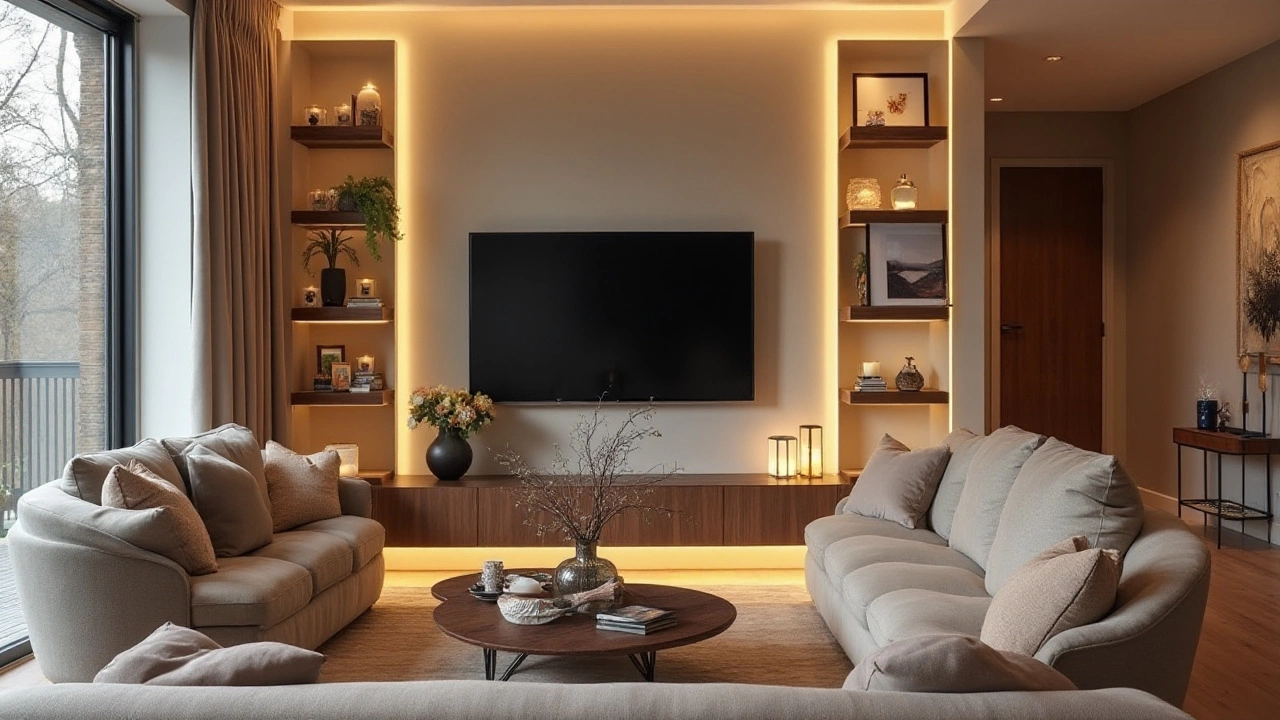
Avoiding Common Mistakes
The excitement of setting up a new home can sometimes lead homeowners into a series of blunders, especially when installing their prized TV wall mount. One of the most frequent oversights is failing to check the wall’s integrity. New builds may incorporate materials like drywall, which can be tricky to deal with. Without understanding the weight limits or the specific anchors needed, you might end up with a disheartening crash just after you’ve settled in. A strong and reliable anchor choice, like toggle bolts or wall studs, is essential in ensuring that your setup is secure.
The next common pitfall is inaccurate measuring and levelling. A crooked TV can not only irritate the perfectionist in you but might also strain the mounting apparatus over time. Like any precise task, using a spirit level and making exact measurements are imperative. Yet, many overlook this step in the haste of seeing their entertainment center operational. Investing some time to ensure precision will save you a wall full of misplaced drill holes and a skewed viewing experience.
Another prevalent issue stems from poor cable management. The joy of a sleek wall-mounted TV can be overshadowed by a mass of tangled cords spilling down the wall. It's essential to plan for cable concealment, either by installing cable management systems or opting for in-wall solutions if permissible by building standards. This not only enhances the aesthetic but also provides a safer environment free of tripping hazards.
As Dan DiClerico from HomeAdvisor suggests, "A clean setup not only enhances your viewing pleasure but promotes an organized and calm living space."
Finally, forgetting to consider the placement's impact on other room features can lead you astray. Mounting your TV at an incorrect height or angle relative to sofas can cause uncomfortable viewing, where your neck is constantly strained by awkward angles. The rule of thumb is to have your eyes align towards the center of the screen when seated. Avoid these mistakes by envisioning the room's flow and seating arrangements.


